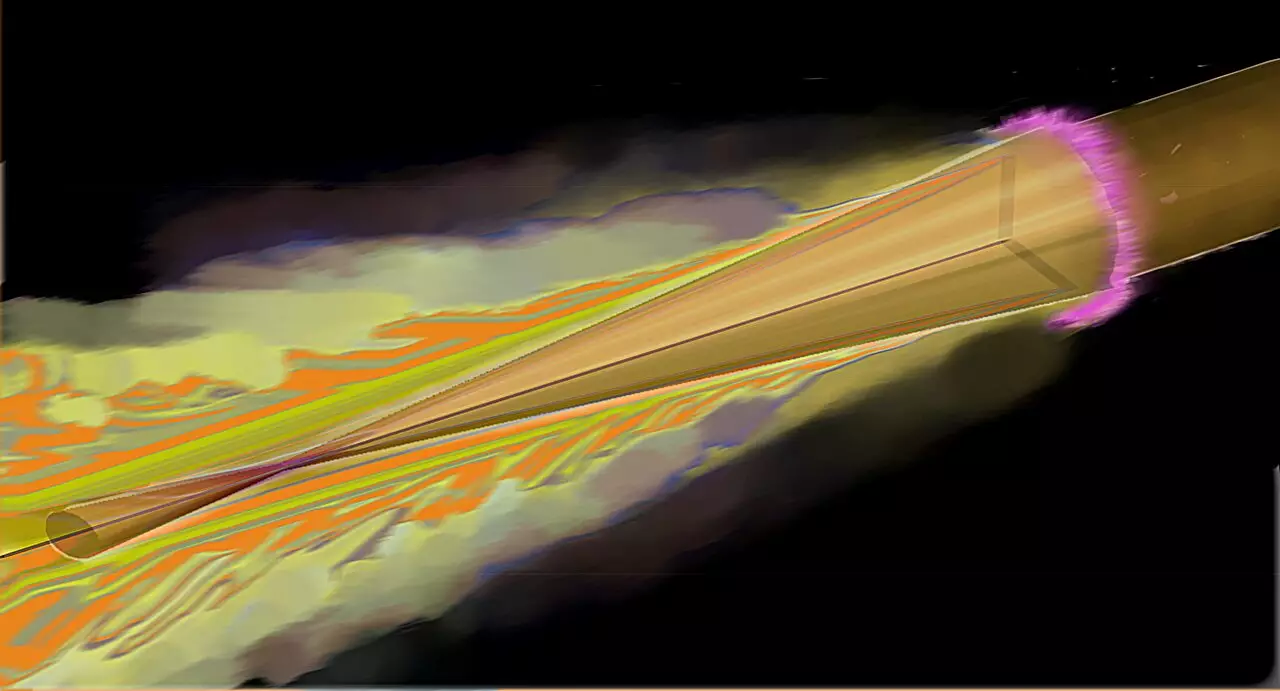The pursuit of understanding the extreme conditions found within stars and planets has always been a daunting challenge for scientists. Inside these celestial bodies, temperatures soar to millions of degrees, while pressures can climb to unprecedented levels—often reaching millions of bars. Replicating these harsh states of matter in laboratory settings has traditionally required the use of powerful technological infrastructures, such as the world-renowned National Ignition Facility (NIF) in California. However, recent breakthroughs led by a research team from Helmholtz-Zentrum Dresden-Rossendorf (HZDR) and the European XFEL have revealed a more efficient and innovative way to create these extreme conditions using less cumbersome technology.
At the heart of this exciting development is the utilization of a remarkably thin copper wire, measuring just 25 micrometers in thickness. This research team has effectively leveraged this wire, employing a high-energy laser to generate immense pressure and temperature in a process that mimics conditions found deep within stars. Unlike prior methodologies that required massive laser systems and thick material samples, the new technique demonstrates that significant scientific accomplishments can be achieved with a streamlined approach.
To bring this process to fruition, researchers employed ultra-short laser pulses generated at the High Energy Density experimental station (HED-HIBEF). Operating at just one joule of energy, these laser pulses possess an astonishing peak power output of 100 terawatts over a mere duration of 30 femtoseconds. This efficiency allows scientists to observe rapid thermal interactions and other phenomena at a scale previously thought inaccessible with smaller equipment.
The method used involves firing high-energy laser flashes at the copper wire, generating instantaneous shock waves as a result. These shock waves travel through the wire, causing it to compress and generate intense heat. Researchers successfully captured this revolutionary process by utilizing ultra-powerful X-ray flashes sourced from the European XFEL in Schenefeld, Germany. This unique combination of laser technologies enabled scientists to witness startling effects within the copper wire during brief windows of time, ultimately unlocking new insights into material behavior under extreme conditions.
By systematically manipulating the time intervals between laser pulses and X-ray exposures, the research team produced a detailed “X-ray film” showcasing the event’s dynamics. Observations revealed that initial laser interactions create shock waves that, upon rapid convergence at the wire’s center, generate astronomical pressures—estimated at around 800 megabars—equivalent to 800 million times the atmospheric pressure experienced at sea level.
The experiments measured densities within the wire reaching eight to nine times that of standard copper, alongside temperatures soaring to a staggering 100,000 degrees Celsius. These values correspond closely to the conditions found in the corona of white dwarf stars—an exciting revelation for astrophysicists and material scientists alike. Importantly, the methodology showcases the viability of achieving similar conditions in other materials, such as iron and various forms of plastic, opening avenues for further investigations in both astrophysics and material sciences.
The researchers indicate that these methodologies will not only shed light on the internal workings of gas-giant planets like Jupiter but will also pave the way for studying remote exoplanets with similar compositions. As the field continues to evolve, the ability to generate and observe extreme conditions through this innovative technique could expand the horizons of what we know about both planets and stars.
Moreover, this method carries the potential to significantly advance the field of fusion research. The controlled laboratory creation of extreme temperatures, densities, and shock-wave phenomena positions this research as a vital tool for achieving successful nuclear fusion—an energy source that aims to harness the power of stars. Currently, multiple teams worldwide are exploring high-performance laser-driven fusion reactors, making this research timely and highly relevant.
Dr. Thomas Cowan, who leads the HZDR Institute of Radiation Physics, has noted the promising possibilities that have emerged from this research. By examining the inner workings of fuel capsules encased in frozen hydrogen subjected to intense laser pulses, scientists may soon discover pathways to achieve a net positive energy output—a goal paramount to the future of clean energy solutions.
To conclude, the innovative techniques developed by the HZDR and European XFEL research team not only provide profound insights into the extreme states of matter that exist in the universe but also ensure that we are on the cusp of significant breakthroughs across various scientific disciplines. The ongoing evolution of these advanced methods highlights the importance of continual technological development in the scientific quest to demystify the universe. The implications are vast—affecting everything from astrophysics to energy sustainability—and suggest an exciting future for scientific exploration.


Leave a Reply